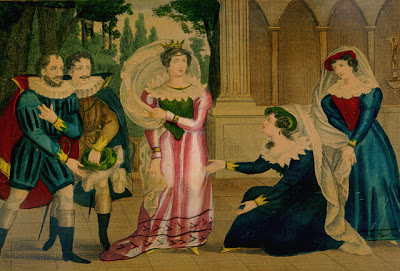Queen Elizabeth I was undoubtedly a great monarch in the history of England. Her popularity reached the extent that a complete era was named after her. She had a great vision to run a kingdom, plus she treated equally the people of every faith, unlike her catholic sister Mary I who would burn the protestants in stakes just because of difference in ideas. Elizabeth was a devout protestant, but many of her courtiers would keep the catholic faith.
On the other side, renaissance age was going on in the era of Queen Elizabeth when people started taking interest in art and culture. The new age paintings, sculptures and architectures, were in the limelight. Elizabeth was also a great fan of painting. Moreover, the people’s interest in the flamboyant clothing started enhancing. Queen would also wear these renaissance dresses. Her costumes would be beaded with jewels, which were the subject of allure for the people.
Besides, music and dance were also flourished during the era of this queen. Volta and galliard were two famous renaissance dances during that period. Volta dance gained more popularity, when Queen Elizabeth performed this dance with her friend Robert Dudley. This dance has been displayed in a famous film “Elizabeth” that was released in 1998. Another demonstration of the Volta dance can be seen in a 2007 film – “Elizabeth: The Golden Age”, between Sir Walter Raleigh and Bess (queen’s lady-in-wait). People wearing beautiful renaissance and medieval costumes have also been displayed perfectly in these films. Moreover, Shakespearean dramas also belonged to the era of Elizabeth, which have been played today also with great enthusiasm.
Apart from the development in art and culture, the Elizabethan era was the age of the scientific revolution, and a number of inventions and explorations were being made by several great men. This era paved the way for the modern age in a true sense. That is why, many of the scholars call this era – the early modern age.
The Elizabethan Era has set a perfect example for the later ages, and it has provided a lot of things to today’s scenario. The renaissance costumes of that era are part of the fashion trends in the recent times. Apart from the costumes, art, culture and music of that period are also the subject of inspiration today. The new-age artists take the ideas from these artistic genres and prepare the new styles. The confluence of the costumes of Elizabethan and modern era, really provides a distinct genre. www.tudordressing.com is the best example of tudor era and Queen Elizabeth's lifestyle costume and dresses.






